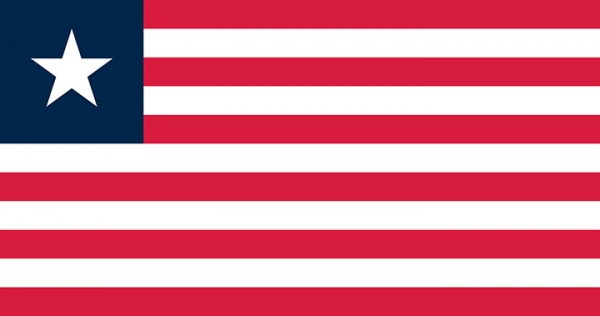
Liberia
Liberia
Republic of Liberia: Flag — Coat of Arms — President Ellen Johnson-Sirleaf
Geography
Lying on the Atlantic in the southern part of West Africa, Liberia is bordered by Sierra Leone, Guinea, and Côte d’Ivoire. It is comparable in size to Tennessee. Most of the country is a plateau covered by dense tropical forests, which thrive under an annual rainfall of about 160 in. a year.
History
Africa’s first republic, Liberia was founded in 1822 as a result of the efforts of the American Colonization Society to settle freed American slaves in West Africa. The society contended that the immigration of blacks to Africa was an answer to the problem of slavery as well as to what it felt was the incompatibility of the races. Over the course of forty years, about 12,000 slaves were voluntarily relocated. Originally called Monrovia, the colony became the Free and Independent Republic of Liberia in 1847.
The English-speaking Americo-Liberians, descendants of former American slaves, make up only 5% of the population but have historically dominated the intellectual and ruling class. Liberia’s indigenous population is composed of 16 different ethnic groups.
The government of Africa’s first republic was modeled after that of the United States, and Joseph Jenkins Roberts of Virginia was elected the first president. Ironically, Liberia’s constitution denied indigenous Liberians equal rights with the lighter-skinned American emigrants and their descendants.
After 1920, considerable progress was made toward opening up the interior, a process that was speeded up in 1951 by the establishment of a 43-mile (69-km) railroad to the Bomi Hills from Monrovia. In July 1971, while serving his sixth term as president, William V. S. Tubman died following surgery and was succeeded by his longtime associate, Vice President William R. Tolbert, Jr.
Tolbert was ousted in a military coup on April 12, 1980, by Master Sgt. Samuel K. Doe, backed by the U.S. government. Doe’s rule was characterized by corruption and brutality. A rebellion led by Charles Taylor, a former Doe aide, and the National Patriotic Front of Liberia (NPFL), started in Dec. 1989; the following year, Doe was assassinated. The Economic Community of West African States (ECOWAS) negotiated with the government and the rebel factions and attempted to restore order, but the civil war raged on. By April 1996, factional fighting by the country’s warlords had destroyed any last vestige of normalcy and civil society. The civil war finally ended in 1997.
In what was considered by international observers to be a free election, Charles Taylor won 75% of the presidential vote in July 1997. The country had next to no health care system, and the capital was without electricity and running water. Taylor supported Sierra Leone’s brutal Revolutionary United Front (RUF) in the hopes of toppling his neighbor’s government and in exchange for diamonds, which enriched his personal coffers. As a consequence, the UN issued sanctions.
In 2002, rebels—Liberians United for Reconciliation and Democracy (LURD)—intensified their attacks on Taylor’s government. By June 2003, LURD and other rebel groups controlled two-thirds of the country. Finally, on Aug. 11, Taylor stepped down and went into exile in Nigeria. Gyude Bryant, a businessman seen as a coalition builder, was selected by the various factions as the new president. By the time he was exiled, Taylor had bankrupted his own country, siphoning off $100 million. According to the New York Times, Taylor left Liberia the world’s poorest nation. In 2004, international donors promised more than $500 million in aid.
In a Nov. 2005 presidential run-off election, Ellen Johnson-Sirleaf, a Harvard-educated economist who had worked at the World Bank, defeated George Weah, a former world-class soccer star. In Jan. 2006 she became Africa’s first female president.
In 2006, former president Taylor, in exile in Nigeria, was turned over to an international court in the Hague to face trial on charges of crimes against humanity for supporting rebel troops in Sierra Leone’s brutal civil war that claimed the lives of about 300,000 people in the 1990s. (http://www.state.gov
Monrovia. January 16, 2006. Inauguration ceremony of President Helen Johnson-Sirleaf
| President Charles Taylor. 2002 | March 30, 2006. Taylor before the Special Court for Sierra-Leone. | |
|
William Tubman (1944-1971) |
William Tolbert (1971-1980_ |
Samuel Doe (1980-1990) |
No Comments
Sorry, the comment form is closed at this time.
